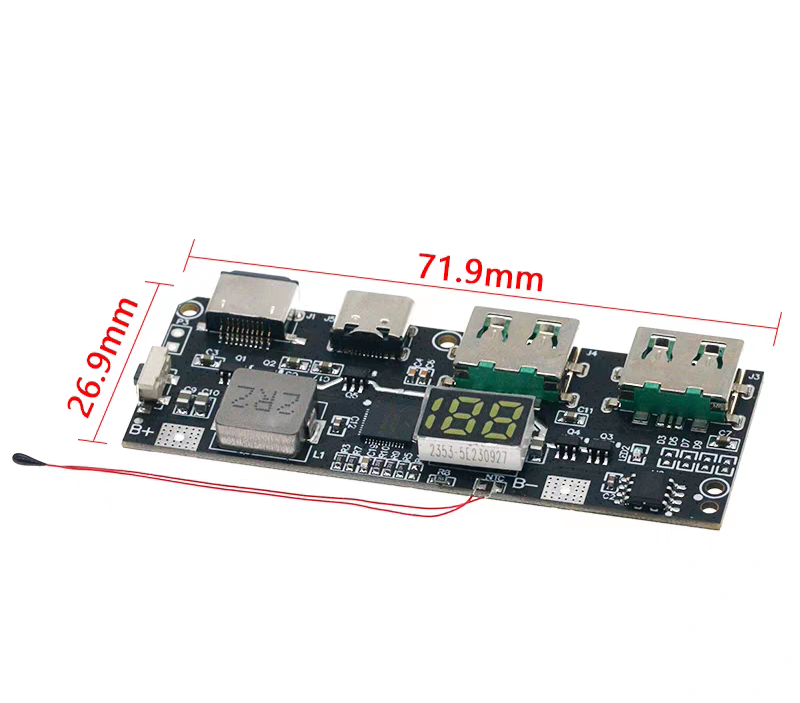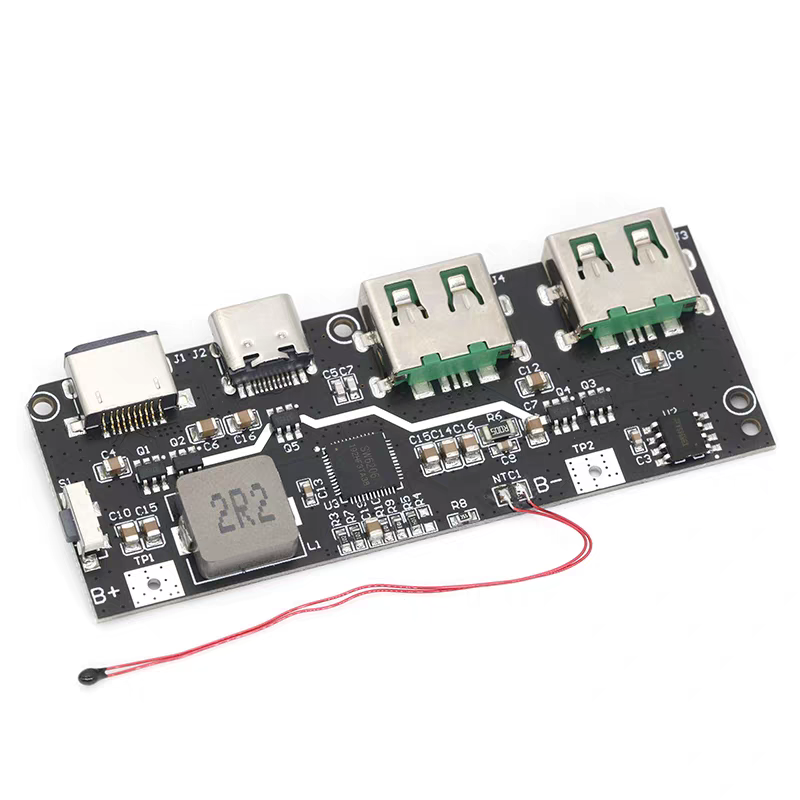Microscale
Two-way fast charging power bank module 22.5W 5-port with segment display
Two-way fast charging power bank module 22.5W 5-port with segment display
Couldn't load pickup availability
Two-way fast charging mobile power module 22.5W power bank 5-port QC4+PD3.0.
Product Features
-
Switching charging: Current up to 5A, efficiency up to 95%
-
Supports 4.2/4.35/4.4/4.5V battery types
-
Supports JEITA standard
-
Supports temperature environment control
-
Synchronous boost: Output power up to 22.5W, efficiency up to 95%
-
Automatic load detection / light load detection
-
Supports wireless charging mode
-
Supports low current mode output
-
Fast charging protocols (output):
Supports PPS / PD3.0 / PD2.0
Supports QC4+ / QC4 / QC3.0 / QC2.0
Supports AFC, FCP, SCP
Supports PE2.0 / PE1.1
Supports SFCP
Supports VOOC -
Fast charging protocols (input):
Supports PD3.0 / PD2.0
Supports AFC, FCP, SCP
Supports PE1.1 -
Type-C port: Built-in USB Type-C port logic; supports Try.SRC function
-
BC1.2 module: Supports BC1.2 DCP mode; supports Apple/Samsung mode
-
Protection mechanisms:
Input over-voltage protection
Output over-current / short-circuit protection
Overcharge / overtime / over-voltage protection
Temperature protection -
Product Parameters
The charging process is divided into three stages:
- Trickle mode
- Constant current mode
- Constant voltage mode
- When the battery voltage is below 3V, the charging module operates in trickle mode with a charging current of 300mA.
- When the battery voltage is above 3V, the module switches to constant current mode, charging at the set standard current until the power reaches about 21W.
- When the battery voltage rises to the target voltage (e.g., 4.2V), the module enters constant voltage mode. At this stage, the charging current gradually decreases while the battery terminal voltage remains unchanged.
- When the charging current decreases to the cutoff current, charging stops and ends.
After being fully charged, if the battery voltage drops below the target voltage by more than 0.1V, the system will automatically start charging again.
(Note: A voltage above 4.2V is normal and will not damage the battery. A reading of 4.2V with the indicator still flashing means charging is not yet complete. Full charge is determined not only by voltage but also by current status.)
Precautions
1. Wiring requirements for external battery connection
The wire connecting the mainboard to the battery must handle more than 10A current.
Use copper wire of at least 1 mm² cross-sectional area.
For regular use, 1.5 mm² wire is recommended.
No need for excessively thick wire, but it must not be too thin, as overly thin wire can cause safety issues due to high battery terminal current.
2. Built-in protection chip
The mainboard already has a protection chip. The battery must not have an extra protection board attached. If there is one, please remove it; otherwise, it will prevent normal operation.
(Because the protection board will limit large current output — when the output power is too high, it will trigger protection.)
3. Testing note
If you are testing the mainboard using small USB fans, do not use it to charge a phone at the same time.
This is not allowed for certain reasons, so simply avoid doing it.
If you must charge a phone, you must solder the connection securely.
4. Compatible battery types
Supports 4.2 V 18650 / polymer / ternary lithium batteries, large cells are acceptable.
Multiple 18650 cells can be connected in parallel.
Not supported: iron-lithium batteries, primary lithium batteries, nickel-metal hydride, nickel-cadmium, lead-acid batteries, etc.
Batteries must not be connected in series!
First use:
If battery level display is inaccurate, fully discharge and recharge once.
During first charge, if all 4 indicator lights stay on for over 5 hours at 4.2 V, charging will stop automatically; there’s no need to worry about overcharging.




